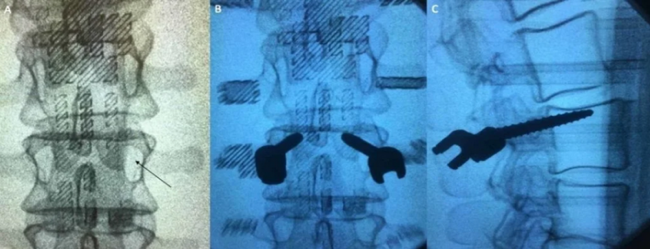The primary learning goal of the simulator was to instruct junior neurosurgical trainees in the anatomy and technique for pedicle screw placement in the lumbar spine. As stated in the study, they have already 3D-printed 10 SpineBox models for training, which were used to place a total of 100 pedicle screws in 50 lumbar levels.
模拟器的主要目标是培训初级神经外科受训者在腰椎椎弓根螺钉固定上的的解剖学技术。如论文中所述,团队已经3D打印了10个SpineBox用于训练,用于在50个腰椎位置放置总共100个椎弓根螺钉。

The pedicle screws of the 3D-printed lumbar vertebrae can be seen within the model after being placed and graded based on location for both teaching and objective skill assessment.
3D打印的腰椎椎弓根螺钉在进针后可以被观察,可以根据进针点和放置水平进行评分
3D printing has already proven to be atechnology that can provide the means to recreate key points of anatomy foranatomical and procedural learning. This is especially true in the realm ofspinal surgery, as with Clifton and Damon’s original Biomimetic Human TissueSimulators, another training model they developed to help hundreds of medicalresidents improve their skills. Furthermore, as many institutions around theworld continue to acquire desktop 3Dprinters, they will need more open-access and cheap simulator designs that donot require purchase or extensive assembly.
- 还没有人评论,欢迎说说您的想法!



